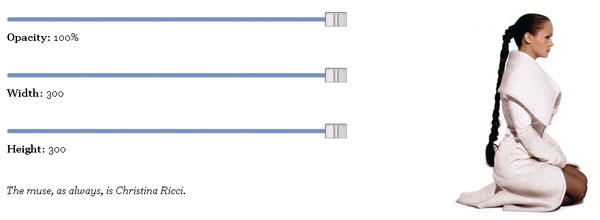Detect Browser Bars Visibility with JavaScript
It's one thing to know about what's in the browser document, it's another to have insight as to the user's browser itself. We've gotten past detecting which browser the user is using, and we're now into knowing what pieces of the browser UI users are seeing.
Browsers provide window.personalbar, window.locationbar, and window.menubar properties, with the shape of { visible : /*boolean*/} as its value:
if(window.personalbar.visible || window.locationbar.visible || window.menubar.visible) {
console.log("Please hide your personal, location, and menubar for maximum screen space");
}
What would you use these properties for? Maybe providing a warning to users when your web app required maximum browser space. Outside of that, these properties seem invasive. What do you think?
![39 Shirts – Leaving Mozilla]()
In 2001 I had just graduated from a small town high school and headed off to a small town college. I found myself in the quaint computer lab where the substandard computers featured two browsers: Internet Explorer and Mozilla. It was this lab where I fell...
![CSS @supports]()
Feature detection via JavaScript is a client side best practice and for all the right reasons, but unfortunately that same functionality hasn't been available within CSS. What we end up doing is repeating the same properties multiple times with each browser prefix. Yuck. Another thing we...
![Facebook Sliders With Mootools and CSS]()
One of the great parts of being a developer that uses Facebook is that I can get some great ideas for progressive website enhancement. Facebook incorporates many advanced JavaScript and AJAX features: photo loads by left and right arrow, dropdown menus, modal windows, and...
![Using Opacity to Show Focus with MooTools]()
I'm a huge fan of using subtle effects like link nudging (jQuery, MooTools) to enhance the user experience and increase the perceived dynamism of my websites. Trust me -- a lot of little things are what take websites to the next level.





I remember testing these out recently, and from memory, they don’t really do anything in most browsers (always set to true).